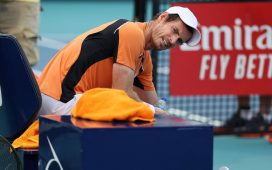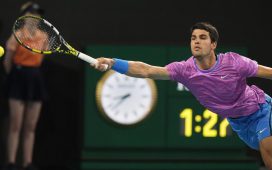Bryson DeChambeau sounds like a character from a novel, one perhaps set on the Côte d’Azur in the 1930s, a raffish figure with a taste for the high life. He is, in fact, a 27-year-old golfer from California, and the only high life that interests him is the flight of a golf ball, which when hit by Mr DeChambeau goes an outrageous distance. Nicknamed “the scientist” for his single-minded application of new ideas about golf club design and swing mechanics – his aim is to do for golf what his hero Einstein did for relativity. He has married theory with sheer power, adding 40lb in muscle weight in the past six months to maximise the length of his driving and overwhelm golf courses, even one as fearsome as Winged Foot in New York, where he was the runaway winner of the US Open.
Every so often someone comes along who revolutionises a sport. Donald Bradman did it in cricket in the 1930s with batting so perfect the English bowlers had to resort to bodyline – bouncers directed at his head – to curb him. Mr DeChambeau may have an even bigger impact on golf than “the Don” had on cricket, with pundits saying it will never be the same again – the authorities are already discussing changing the composition of the ball to reduce the distance he can hit it. His bomb and gouge approach is rendering great old courses impotent, offending golfing purists who dislike his power game, his ugly, all-action swing, the fact he doesn’t much care whether he hits the fairway or not – distance, not accuracy, is the key – and his brash persona. He annoyed fellow pros at a tournament in July when he tried to have his ball moved under the “dangerous animal” rule because he’d seen a red ant and thought he was close to an anthill. They also criticise his slow, deliberate way of playing. “I’m definitely changing the way people think about the game,” says Mr DeChambeau.
What the fuss is about is a power hitter proving unstoppable in a sport where artistry and touch are supposed to be the keys to success. There have been plenty of other players who hit the ball a long way, and some of Mr DeChambeau’s contemporaries can at times match his driving lengths, but no one consciously brutalises a course the way he does. Aficionados in what remains a very conservative sport tend to prefer golfing artists such as Seve Ballesteros and Lee Trevino, players who could conjure improbable shots from apparently impossible positions.
There are, though, counter-examples in other sports. Venus and Serena Williams’ power game revolutionised women’s tennis, and no one argues that their achievements were somehow unethical. Norwegian boxer Cecilia Brækhus, who has taken her sport to new levels, welcomes the triumph of power over grace in female sport, pointing out that when she started out “women with muscles were frowned upon”. Nostalgists may have to accept that the world has changed. We are unlikely to see another CB Fry, who at the turn of the 20th century represented England at both cricket and football and equalled the world long-jump record before turning down the throne of Albania. The age of the graceful, gifted amateur is over. Science trumps art and 10,000 hours spent in the gym are never wasted.








